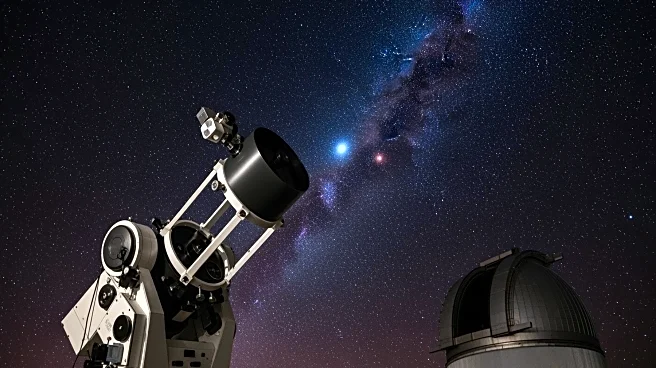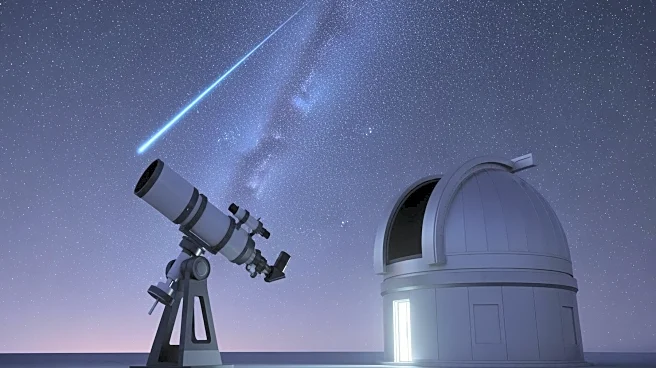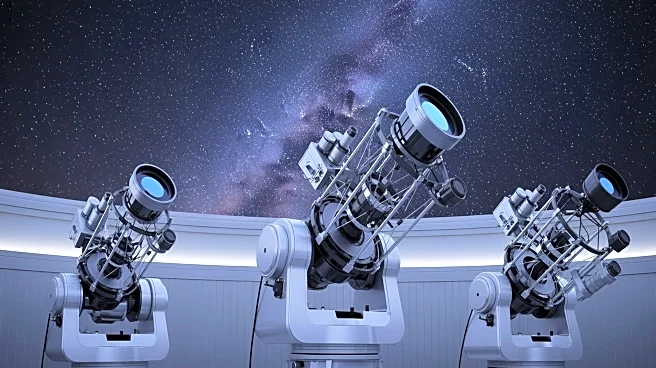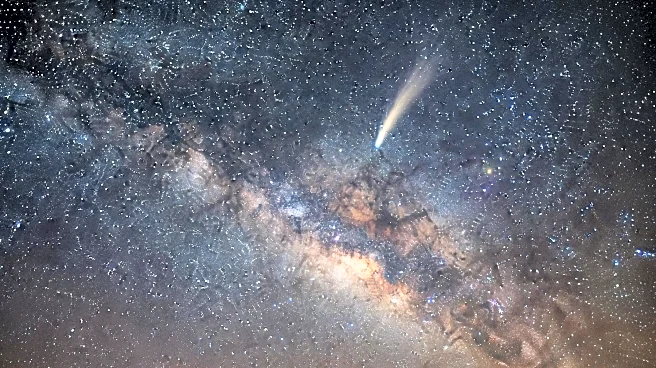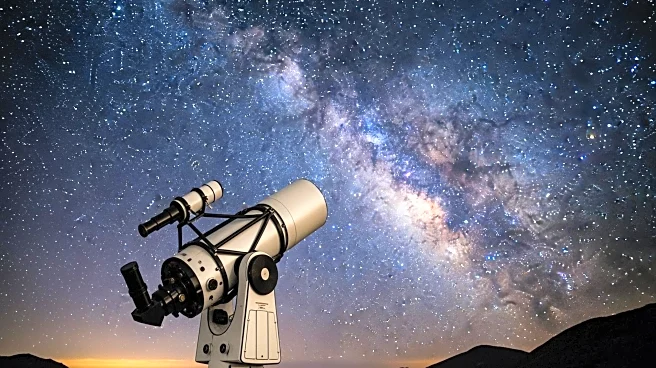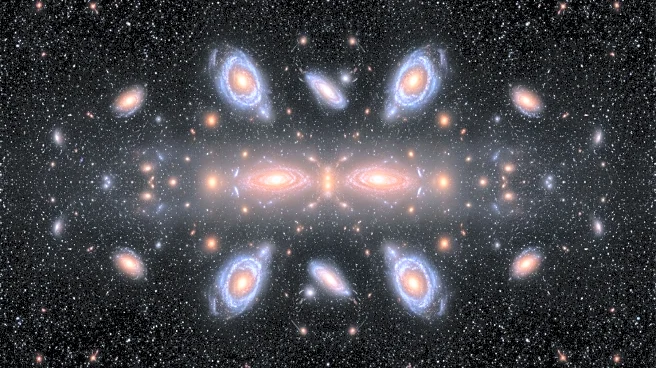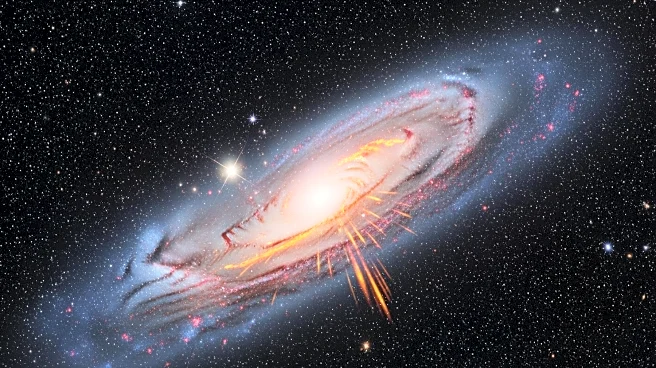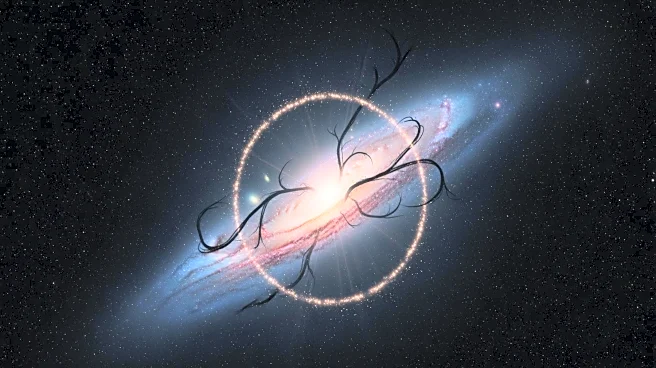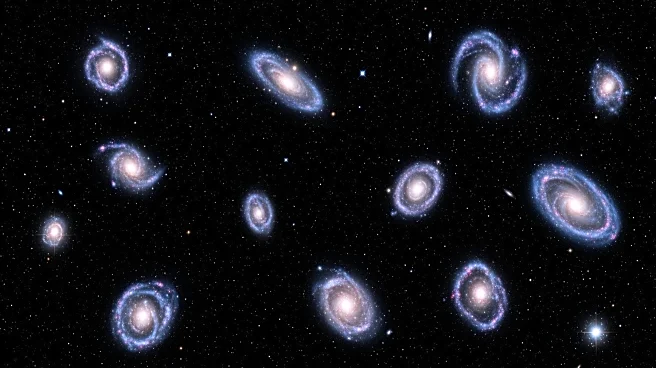What's Happening?
The Vera C. Rubin Observatory, located in the Chilean Andes, is set to embark on a decade-long mission known as the Legacy Survey of Space and Time (LSST). This ambitious project aims to scan the southern
sky every three nights, tracking the brightness, position, and movement of billions of celestial objects. The observatory is equipped with the Simonyi Survey Telescope, featuring an 8.4-meter mirror and the largest digital camera ever created for astronomy, a 3.2-gigapixel LSST Camera. The observatory will detect up to 10 million changing objects each night, including newly discovered asteroids and supernovas. A specialized software system, referred to as the 'data butler,' will manage the nightly influx of over 20 terabytes of data, allowing astronomers to focus on scientific analysis rather than data management.
Why It's Important?
The Vera C. Rubin Observatory's mission is significant for its potential to enhance our understanding of the universe. By providing the most complete, real-time record of the changing sky, the observatory will contribute to the study of dark matter, a mysterious substance that constitutes the majority of matter in the universe. The observatory honors Vera C. Rubin, whose research confirmed the presence of dark matter and reshaped cosmology. The data collected will help scientists map billions of galaxies and explore how dark matter influences the universe's structure and behavior. This project represents a major advancement in astronomical research, offering insights that could lead to groundbreaking discoveries in cosmology.
What's Next?
As the observatory begins its operations, scientists anticipate a wealth of new data that will require extensive analysis. The findings from the LSST are expected to drive future research in cosmology and astrophysics, potentially leading to new theories about the universe's composition and evolution. The observatory's work will likely attract collaboration from international research institutions and could inspire further technological advancements in data processing and astronomical observation.
Beyond the Headlines
The Vera C. Rubin Observatory's mission also highlights the importance of international cooperation in scientific research. Located in Chile, the observatory is a testament to global collaboration in the pursuit of knowledge. Additionally, the project underscores the role of women in science, honoring Vera C. Rubin's contributions and inspiring future generations of female scientists. The observatory's work may also influence public interest in astronomy and space exploration, fostering a greater appreciation for the universe's complexities.
